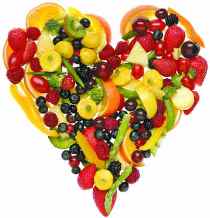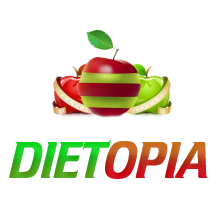
If you have been diagnosed with heart problems like Heart Failure, Atherosclerosis,
Coronary Artery Disease, or other issues, you may have to follow a cardiac or heart healthy diet in order to avoid future problems. Of course, it is best if everyone follows a heart healthy diet in order to avoid heart problems in the future, especially if you have a family history of heart problems, i.e., a close relative has died from these conditions or suffers from them currently. A healthy cardiac diet plus regular exercise is the number one way you can prevent heart problems and prolong your life.
Calorie Intake
It is recommended that your calorie intake be sufficient in order to maintain your weight if you are currently at a healthy weight. A healthy weight is generally a BMI between 18.5 and 25. If your BMI is below 18.5 or above 25, you are at risk for heart problems and need to follow a plan to either gain or lose weight.
In order to gain weight, eat more calories than your BMR plus your “activity factor”, or what you expend exercising. In order to lose weight, eat less calories than your BMR plus your activity factor.
Foods
While maintaining a healthy weight is important, it will not prevent heart problems. The best way to keep your heart healthy is to make sure you are putting good foods into your body. A heart healthy diet is high in nonstarchy vegetables, low in unhealthy fats but high in healthy fats, and low in sodium. It is important to choose mostly foods that are prepared fresh and close to their natural form. Avoid processed foods that come in boxes, especially if their shelf life is long.
Fats
There are many different types of fats, not all of which are bad. Many people think fats are not good for you. On the contrary, fats are essential and needed to survive. Eating the right type of fats, however, is key to maintaining heart health. There are a few different types of fats. There are trans fats, saturated fats, unsaturated fats, and polyunsaturated fats including omega-3, omega-6 and omega-9 fats. The ratio of these fats in your diet in key to your heart health.
Trans Fat
Trans Fat is a type of fat found in many processed foods. It does not occur in large amounts naturally. It is made artificially out of polyunsaturated fat in order to make it taste more like saturated fat. This is what original margarine is made from. Food manufacturers have also enjoyed using trans fat because it gives foods a longer shelf life. While trans fat might be good for a food’s expiration date, it is horrible for you and your heart. It raises your bad cholesterol, or LDL, and lowers your good cholesterol, or HDL. If your doctor has told you that you have high cholesterol, cutting out trans fat is probably the single most important thing you can do in order to lower it. Beware also of food labels: a product may say that it has 0 grams of trans fat per serving, but per the FDA, it may have between 0 and 0.5 grams. Instead, look on the ingredients label for the words “hydrogenated oil” or “partially hydrogenated oil” in order to avoid trans fats completely.
Saturated Fat
Saturated Fat is naturally occurring in products like butter, milk, and fatty meats like hamburger meat or pork fat. Saturated Fat also raises your cholesterol. It is usually solid at room temperature. The American Heart Association recommends that you eat no more than 7% of your calories in Saturated Fat. The lower you can go with Saturated Fat, the better, although it is not as bad for you as Trans Fat. If you were eating a 1500 calorie diet, that would give you about 11-12 g of Saturated Fat as your limit daily.
Unsaturated Fat and Polyunsaturated Fat
Unsaturated Fat and Polyunsaturated Fat is usually liquid at room temperature. They are both naturally occurring in products like fish, canola oil, olive oil, avocados, nuts, olives, and seeds. These are your healthy fats. If you choose liquid fat at room temperature, like oils, you are generally choosing healthy fats. Fats like these have many benefits. They have Fat Soluble Vitamins like Vitamin E, K, and A. They are also a source of energy, and are very filling causing you to eat less calories overall. The American Heart Association recommend that fat be about 30% of your calories overall, and most of it should be these fats. If you were eating a 1500 calorie diet, that would be about 50 grams of fat daily or about 11 teaspoons. Remember, however, that many foods already contain fat, so you don’t need to add 11 teaspoons of fat to your meals every day; just eat a variety of healthy foods and cook with oil, but avoid deep frying or excessive amounts of oil.
Sodium
It is important for you to also restrict sodium in order to follow a heart healthy
diet. This is to avoid hypertension, or high blood pressure, which can damage your heart. The American Heart Association recommends 2000 milligrams of sodium daily, or less. This is a little bit less than a teaspoon of table salt. In order to avoid sodium, choose foods that are freshly prepared. Avoid eating out often, or ask for your food to be prepared without salt or prepackaged sauces. Avoid foods that come in boxes, including most frozen foods. Reading labels can help you to avoid sodium – try to avoid foods that contain more than 200 or 300 mg per serving and watch your portion size.
Meals
A good way to plan heart healthy meals is to use the “plate method”. This is a method taught by dietitians and nutritionists as an easy way to eat healthy. Fill half of your plate with nonstarchy vegetables. Fill a quarter of your plate with lean protein like lean meats, fish, nuts, or beans. Fill another quarter of your plate with a starch like corn or a half a small baked potato. To this you can add a fruit, and a serving of a dairy product for a well balanced meal. Remember to eat a healthy fat somewhere too! You could put nuts or seeds on your salad, use fish as your protein, add olive or canola oil to your vegetables, etc. There are lots of fun ways to experiment and come up with healthy combinations you enjoy!
Snacks
It is a good idea to eat every 3-4 hours to avoid getting overly hungry and then
overeating in your next meal. Even though snacks are important, it is also important not to snack excessively and thus gain weight. Also make sure your snacks are heart healthy. Fruits and Vegetables are always a great choice for snacks. If you also pair them with nuts, whole grains, beans, avocados, or seeds you will have a balanced snack that will satisfy you.
Menu
Breakfast:
1/2 cup oatmeal with cinnamon
1 ounce nuts
8 ounces of fat free milk
2 scrambled eggs
Lunch:
1 tuna salad sandwich made with low fat mayo on whole wheat bread
1 lettuce leaf
1 slice of tomato
1 cup of popcorn
1 small apple
8 ounces of fat free milk, water, or calorie free beverage
Dinner:
3 ounce chicken tenderloin prepared without added fat
1 cup of broccoli
1 small side salad
1/2 small baked potato with smart balance,
olive oil, or fat free sour cream on top
1/2 cup of canned peaches with lite syrup
8 ounces of fat free milk, water, or calorie free beverage
